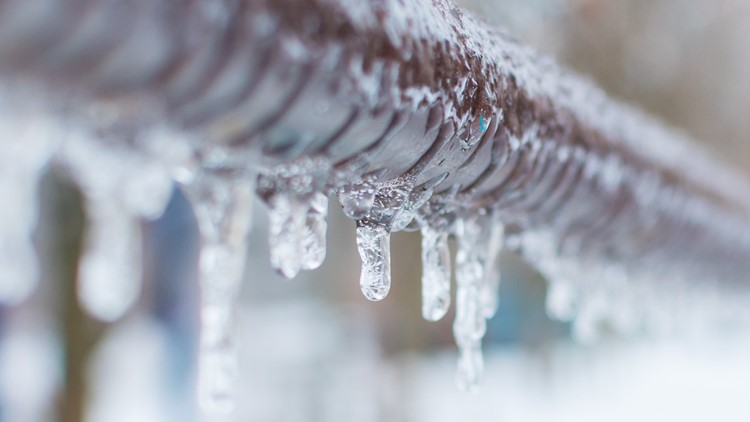Safeguarding Your Pipes from Cold Weather Issues: Key Strategies
Safeguarding Your Pipes from Cold Weather Issues: Key Strategies
Blog Article
Just how do you really feel when it comes to How To Avoid Freezing Pipes?

Cold weather can ruin your plumbing, particularly by freezing pipelines. Right here's just how to avoid it from occurring and what to do if it does.
Intro
As temperature levels decline, the threat of frozen pipes boosts, possibly causing costly repairs and water damages. Understanding exactly how to stop icy pipes is vital for home owners in cool climates.
Recognizing Icy Pipes
What creates pipes to freeze?
Pipelines ice up when exposed to temperature levels listed below 32 ° F (0 ° C) for extended durations. As water inside the pipelines ices up, it broadens, putting pressure on the pipe walls and possibly triggering them to burst.
Threats and damages
Icy pipelines can lead to water system interruptions, home damages, and expensive repairs. Ruptured pipelines can flooding homes and cause comprehensive structural damages.
Signs of Frozen Piping
Identifying icy pipes early can prevent them from rupturing.
How to recognize icy pipes
Look for lowered water circulation from faucets, uncommon odors or noises from pipelines, and noticeable frost on exposed pipes.
Prevention Tips
Insulating at risk pipes
Cover pipelines in insulation sleeves or make use of heat tape to safeguard them from freezing temperatures. Concentrate on pipes in unheated or outside areas of the home.
Heating methods
Keep interior rooms effectively heated, specifically locations with pipes. Open closet doors to enable warm air to circulate around pipelines under sinks.
Protecting Outside Plumbing
Garden pipes and outside taps
Detach and drain pipes garden tubes before winter. Mount frost-proof spigots or cover outside taps with protected caps.
What to Do If Your Pipes Freeze
Immediate actions to take
If you presume frozen pipes, keep faucets open to eliminate stress as the ice melts. Utilize a hairdryer or towels soaked in hot water to thaw pipelines gradually.
Long-Term Solutions
Structural adjustments
Consider rerouting pipelines far from outside walls or unheated areas. Add extra insulation to attics, basements, and crawl spaces.
Updating insulation
Invest in high-grade insulation for pipes, attics, and walls. Proper insulation aids keep regular temperatures and reduces the threat of frozen pipes.
Conclusion
Stopping frozen pipelines calls for aggressive actions and quick responses. By recognizing the reasons, indicators, and preventive measures, property owners can safeguard their plumbing during cold weather.
5 Ways to Prevent Frozen Pipes
Drain Outdoor Faucets and Disconnect Hoses
First, close the shut-off valve that controls the flow of water in the pipe to your outdoor faucet. Then, head outside to disconnect and drain your hose and open the outdoor faucet to allow the water to completely drain out of the line. Turn off the faucet when done. Finally, head back to the shut-off valve and drain the remaining water inside the pipe into a bucket or container. Additionally, if you have a home irrigation system, you should consider hiring an expert to clear the system of water each year.
Insulate Pipes
One of the best and most cost-effective methods for preventing frozen water pipes is to wrap your pipes with insulation. This is especially important for areas in your home that aren’t exposed to heat, such as an attic. We suggest using foam sleeves, which can typically be found at your local hardware store.
Keep Heat Running at 65
Your pipes are located inside your walls, and the temperature there is much colder than the rest of the house. To prevent your pipes from freezing, The Insurance Information Institute suggests that you keep your home heated to at least 65 degrees, even when traveling. You may want to invest in smart devices that can keep an eye on the temperature in your home while you’re away.
Leave Water Dripping
Moving water — even a small trickle — can prevent ice from forming inside your pipes. When freezing temps are imminent, start a drip of water from all faucets that serve exposed pipes. Leaving a few faucets running will also help relieve pressure inside the pipes and help prevent a rupture if the water inside freezes.
Open Cupboard Doors
Warm your kitchen and bathroom pipes by opening cupboards and vanities. You should also leave your interior doors ajar to help warm air circulate evenly throughout your home.

I found that blog posting about Preventing and dealing with frozen pipes when scouting around the internet. Please take a moment to distribute this blog posting if you enjoyed reading it. I recognize the value of reading our article about 6 Ways to Prevent Frozen Pipes.
Contact Us Today Report this page